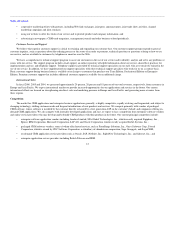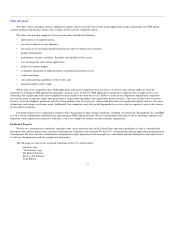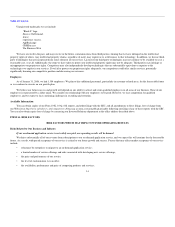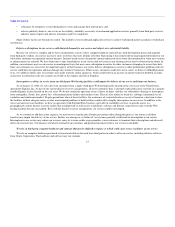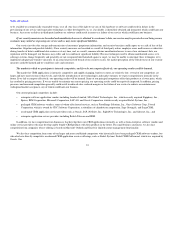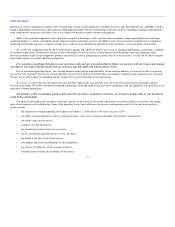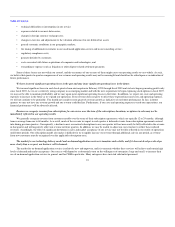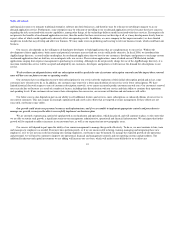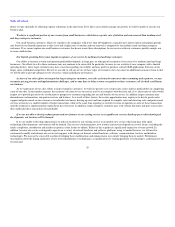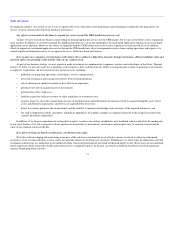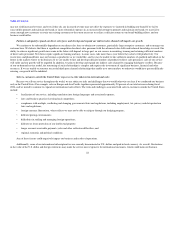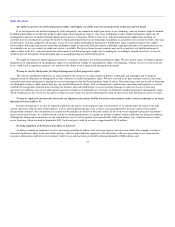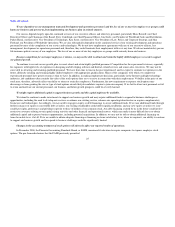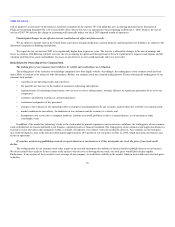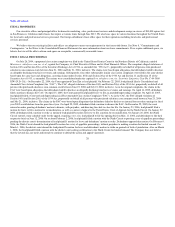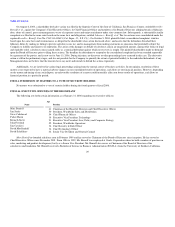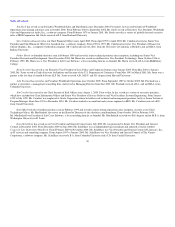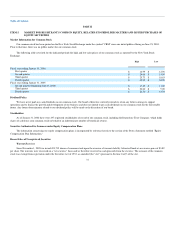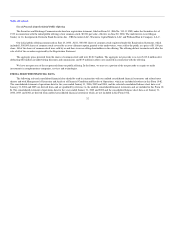Salesforce.com 2005 Annual Report Download - page 25
Download and view the complete annual report
Please find page 25 of the 2005 Salesforce.com annual report below. You can navigate through the pages in the report by either clicking on the pages listed below, or by using the keyword search tool below to find specific information within the annual report.
Table of Contents
may not yield increased revenue, and even if they do, any increased revenue may not offset the expenses we incurred in building our brand. If we fail to
successfully promote and maintain our brand, or incur substantial expenses in an unsuccessful attempt to promote and maintain our brand, we may fail to
attract enough new customers or retain our existing customers to the extent necessary to realize a sufficient return on our brand-building efforts, and our
business could suffer.
Failure to adequately expand our direct sales force and develop and expand our indirect sales channel will impede our growth.
We continue to be substantially dependent on our direct sales force to obtain new customers, particularly large enterprise customers, and to manage our
customer base. We believe that there is significant competition for direct sales personnel with the advanced sales skills and technical knowledge we need. Our
ability to achieve significant growth in revenue in the future will depend, in large part, on our success in recruiting, training and retaining sufficient numbers
of direct sales personnel. New hires require significant training and may, in some cases, take more than a year before they achieve full productivity. Our
recent hires and planned hires may not become as productive as we would like, and we may be unable to hire sufficient numbers of qualified individuals in the
future in the markets where we do business. If we are unable to hire and develop sufficient numbers of productive direct sales personnel, sales of our service
will suffer and our growth will be impeded. In addition, we plan to develop and expand our indirect sales channel by engaging third-party resellers. Because
of our on-demand service model, the structuring of such relationships is complex and requires the investment of significant business, financial and other
resources. If we are unable to structure successful third-party channel relationships that enable us to enter markets we otherwise would have greater difficulty
entering, our growth will be inhibited.
Sales to customers outside the United States expose us to risks inherent in international sales.
Because we sell our service throughout the world, we are subject to risks and challenges that we would otherwise not face if we conducted our business
only in the United States. For example, sales in Europe and Asia Pacific together represented approximately 20 percent of our total revenues during fiscal
2006, and we intend to continue to expand our international sales efforts. The risks and challenges associated with sales to customers outside the United States
include:
• localization of our service, including translation into foreign languages and associated expenses;
• laws and business practices favoring local competitors;
• compliance with multiple, conflicting and changing governmental laws and regulations, including employment, tax, privacy and data protection
laws and regulations;
• foreign currency fluctuations, whose effects we may not be able to mitigate through our hedging program;
• different pricing environments;
• difficulties in staffing and managing foreign operations;
• different or lesser protection of our intellectual property;
• longer accounts receivable payment cycles and other collection difficulties; and
• regional economic and political conditions.
Any of these factors could negatively impact our business and results of operations.
Additionally, some of our international subscription fees are currently denominated in U.S. dollars and paid in local currency. As a result, fluctuations
in the value of the U.S. dollar and foreign currencies may make the service more expensive for international customers, which could harm our business.
22


